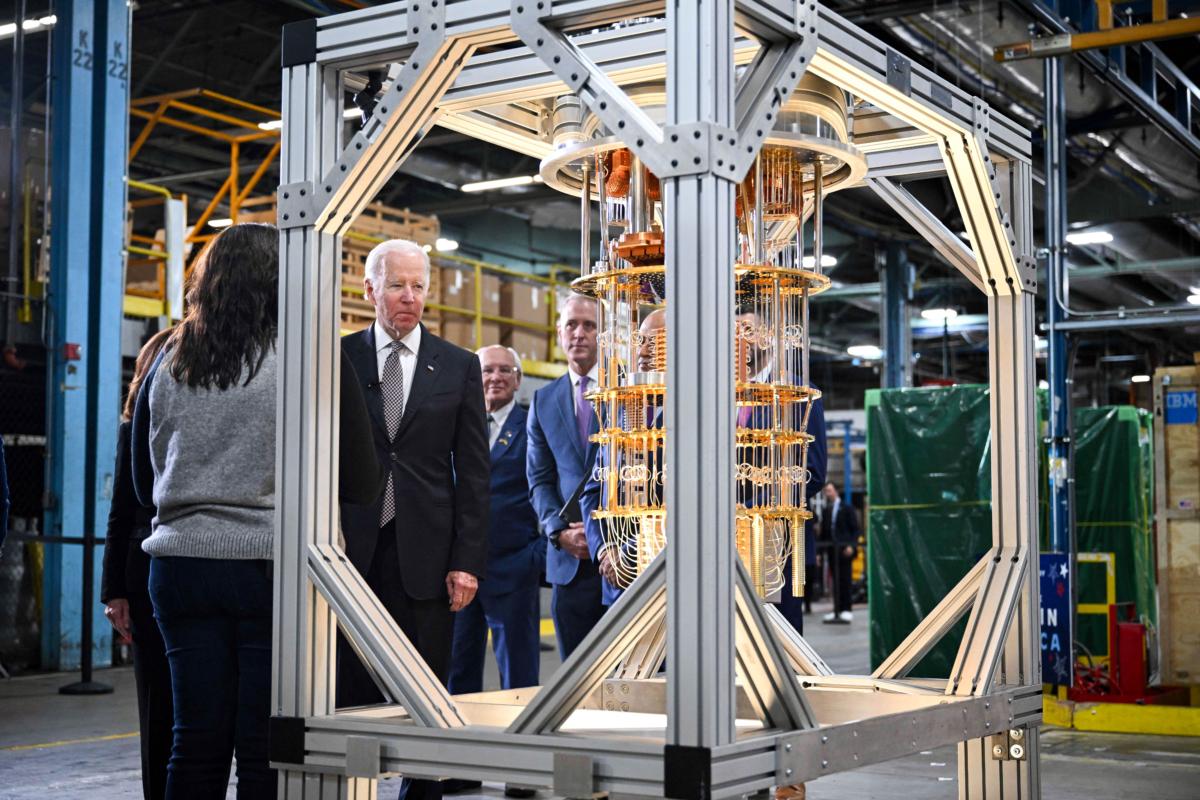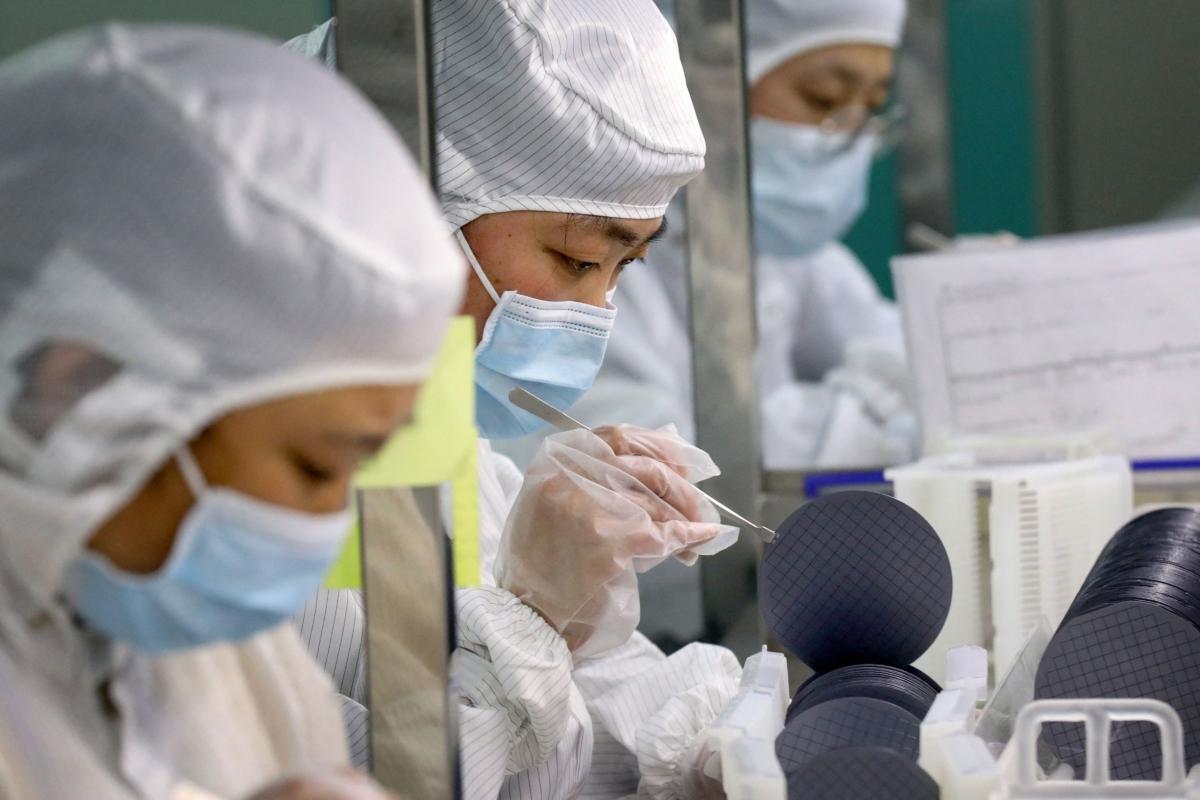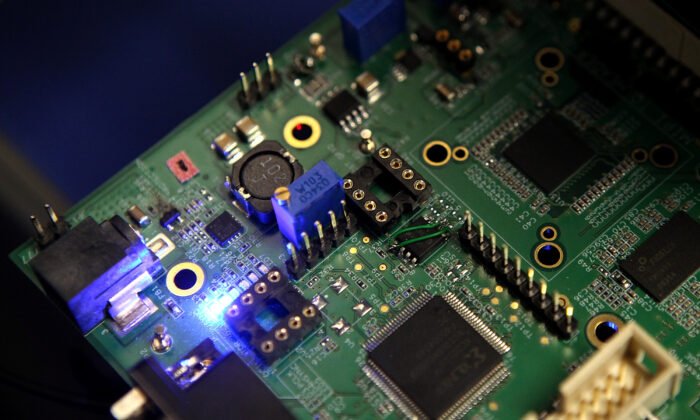New US-Mexico Collaboration in Semiconductor Industry Aims to Address Worldwide Issues
Agreement aims to assist the United States in reducing its reliance on foreign adversaries for semiconductors and their production resources.
The initial phase of this new initiative involves a comprehensive evaluation of Mexico’s existing semiconductor ecosystem, encompassing its regulatory framework, workforce capabilities, and infrastructure requirements.
This evaluation, engaging various stakeholders from both nations, aims to pinpoint potential areas for collaborative efforts to strengthen the semiconductor sector.
“The United States and Mexico play critical roles in ensuring the global semiconductor supply chain aligns with the ongoing digital transformation worldwide,” a statement from the State Department highlighted.
“The manufacturing of essential goods, from vehicles to medical equipment, depends on the resilience and strength of the semiconductor supply chain,” it added.
“The United States and Mexico play critical roles in ensuring the global semiconductor supply chain aligns with the ongoing digital transformation worldwide,” the statement underlined.
“The manufacturing of essential goods, from vehicles to medical equipment, depends on the resilience and strength of the semiconductor supply chain.”
The agreement also helps the United States decrease its reliance on foreign adversaries and countries close to those adversaries for semiconductors and their production materials.
The global semiconductor industry is dominated by specific regions: Asia (Taiwan, South Korea, Japan, and China), the United States, and Europe.
Taiwan’s TSMC and South Korea’s Samsung are the leading semiconductor manufacturers, investing significantly in advanced chipmaking technologies.
The concentration of semiconductor production in Asia, particularly in Taiwan and South Korea, poses risks of supply chain disruptions due to geopolitical tensions, natural disasters, or pandemics.
CHIPS Act and Semiconductor Significance
A fundamental aspect of this partnership is the CHIPS Act of 2022, signed into law by President Joe Biden, which allocates substantial resources to strengthen domestic semiconductor manufacturing and research in the United States.
The act established the International Technology Security and Innovation (ITSI) Fund, providing the Department of State with $500 million over five years to promote the development of secure telecommunication networks and ensure diversification and security of the semiconductor supply chain.
This legislative measure underscores the vital role semiconductors play in global economic security and the technological superiority of the United States.

According to the Semiconductor Industry Association, the state of the U.S. semiconductor industry in 2023 presents a positive outlook but also encounters various challenges, such as supply chain disruptions, restrictions on chip sales to China, and other policy obstacles, including the need to strengthen the skilled workforce.
The report also emphasizes the significance of semiconductors in modern society and the large number being sold each year.
“In 2023, the importance of the semiconductor industry to the world continues to grow, as chips become even more prevalent in today’s essential technologies and drive the development of future transformative technologies,” the report mentioned. “In total, over 1 trillion semiconductors were sold globally last year, a quantity so substantial that if stacked, they would reach higher into the sky than the maximum altitude of commercial aircraft.”
Building on Existing Partnerships
The State Department also highlights that the collaboration “underscores the considerable potential to expand Mexico’s semiconductor industry for the mutual benefit of both nations” by expanding on the existing collaboration under the “bilateral High-Level Economic Dialogue (HLED) and trilateral North American Leaders Summit process.”
The Trump administration focused on successfully establishing the United States-Mexico-Canada (USMCA) free trade agreement governing approximately $1.5 trillion in North American trade annually, a concept further advanced by this new agreement.

Strategic Goals and Benefits
The recent collaboration between the United States and Mexico on semiconductors aims to achieve several strategic objectives.
These include enhancing competitiveness in the global semiconductor industry, diversifying the supply chain to mitigate geographical concentration risks, and fostering innovation within the sector.
By leveraging Mexico’s potential as a semiconductor hub, the collaboration seeks to establish a more distributed and resilient supply chain crucial for managing disruptions and geopolitical challenges.
Mexico’s Role in Semiconductor Sector
The decision to involve Mexico in this partnership stems from the country’s emerging stature in the semiconductor industry. Mexico boasts several advantages, such as its strategic proximity to the United States, established manufacturing base, and competitive labor market.
The country possesses a robust electronics manufacturing sector, supporting industries like automotive, aerospace, and consumer electronics. Expanding Mexico’s semiconductor capabilities will necessitate significant investments in advanced facilities and training programs to develop technical expertise in the workforce.
Balancing China’s Impact
The U.S.-Mexico semiconductor partnership must also be viewed in the broader context of global technological competition, particularly with China.

The United States aims to counterbalance China’s advancements in semiconductor production and technology development by bolstering its own capabilities and forging strategic alliances, particularly in the Western hemisphere.
“When any one country seeks to control global telecommunication networks or semiconductor supply chains, they possess the ability to manipulate or disrupt crucial services, vital infrastructure, and supply chains instantly,” the State Department’s website states. “Should adversaries dominate these sectors, they will
Source link






